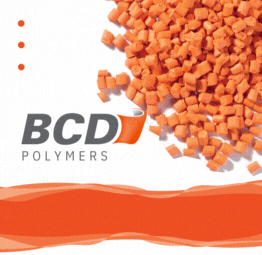Producing quality blown film is not an easy task. A film bubble reacts sensitively to changing process conditions, and only minor changes in temperature, viscosity, and especially pressure can have a negative impact. Existing filters provide the necessary process stability and deliver clean, homogenous melt for a high-quality blown film – when only virgin material is used.
But this won't be the case much longer. The social call for more sustainability in the plastics industry has led to new laws and regulations. Producers face tax penalties and other consequences if they don't increase their use of recycled material significantly. But adding recycled materials to the mix is an additional disruptor to an already delicate process. Depending on their size, contaminants can cause optical flaws and bubble ruptures, leading to line shutdowns.
"The change from using only virgin materials to including recycled material is huge and needs new, innovative technology to support that transition. But we like a challenge," says Christian Schroeder, Global Segment Manager for the recycling market at Nordson. " We developed a melt filter, based on our unique backflush technology, that enables the use of recycled material while keeping the process stable and the end product quality at the usual high level.
Profitability Increases with Backflushing
"Melt filters without a backflushing function have limits when processing recycled material. Contamination levels are high, and the screens clog fast," explains Stefan Woestmann, Process Specialist. "Screens are expensive, and the changing procedure is time-consuming. Through backflushing, the screens are cleaned from contamination and debris over and over, so producers need fewer filter elements and operators need to perform fewer screen changes."
To cope with the high process pressures in blown film applications, Nordson made patent-pending changes to its already proven backflush technology. "It was important to us to remain pressure constant even under difficult conditions to ensure high film quality," reports Stefan Woestmann.
Handling the Pressure
Pressure consistency is an essential component of operating a blown film line successfully. And in this high-pressure application, it is even more important to avoid pressure fluctuations through intelligent solutions. Each screen change is a sensitive step in the filtration process, as the empty cavity must be filled with melt again after the change. If this happens too fast, pressure fluctuations are likely.
"This is a significant issue in blown film lines since the film is usually very thin and reacts sensitively to such events," explains Woestmann. "The BKG® HiCon™ K-SWE-HD/RS melt filter is equipped with the patented melt pressure controlled venting start that fully automizes the filling of the screen cavity after a screen change for maximum pressure consistency. Additionally, the filling is done so carefully that no air entrapments endanger the process or the end product. Producers can rely on a stable process and great quality of the blown film," explains Woestmann.
Maintenance in Mind
The processing of recycled material generates more waste than that of virgin polymers because melt is removed from the filter during backflushing and venting. The BKG® HiCon™ K-SWE-HD/RS melt filter is designed so that this happens in a clean and maintenance-friendly way. The safety cover can be opened vertically, allowing the operator to reach the filter piston from all sides, which facilitates cleaning.
"We are aware of our responsibility towards our planet and pushed for an innovative, sustainable, and efficient solution. We designed this new filter by collecting our knowledge and experience, which we are very proud of," says Christian Schroeder. "It is a compact, intelligent, and easily integrated solution that will make the life of blown film producers much easier. We will show this new concept for the first time at K 2022 and are eager to hear industry reactions."


